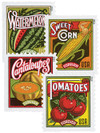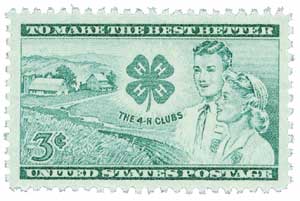
# 5004-07 - 2015 First-Class Forever Stamp - Summer Harvest
U.S. # 5004-07
2015 49¢ Summer Harvest
Before the supermarkets of the 1950s, fruits and vegetables were sold directly out of the wooden crates they were packed in. By the 1880s, refrigerated transport on coast-to-coast railroads meant those crates could travel farther than ever. Competition among growers escalated, inspiring the creative crate-labeling industry that flourished for 70 years.
To draw customers to a brand, producers needed enticing marketing. They used colorful, idealized images of fruit orchards and countryside farms to convey the natural and wholesome origins of their products being shipped nationwide. Firmly glued to the end of wooden crates, the vivid posters spoke for the product inside.
Over time, the design focus shifted. The landscapes of the late 19th century labels were replaced with more direct marketing slogans and images. A healthy child holds out a peach, suggesting the customer try it. A product’s health benefits might be boasted in a slogan or brand name. As time went on, less and less art and more product information appeared on the labels. And eventually, cardboard boxes made the crates and their labels obsolete.
Modern advertising occasionally revisits the old styles found on crate labels. And often, these original designs are reprinted in other forms – turning vintage marketing into contemporary art.
Vintage shipping crate labels, seed packets, and catalogs inspired the stamp art for the Summer Harvest stamps. Michael Doret designed and drew the stamps.
Value: 49¢ 1-ounce first-class letter rate
Issued: July 11, 2015 at the California State Fair, Cal Expo
First Day City: Sacramento, CA
Type of Stamp: DefinitiveӬ
Printed by: Ashton PotterӬ
Method: Offset printing in booklets of 20Ӭ
Perforation: Serpentine Die Cut 10 ¾ x 10 ¼
Self-Adhesive
Quantity Printed: 400,000,000 stamps
Founding Of The 4-H Club
In the late 1800s, it wasn’t uncommon for individuals and groups to create clubs for children to help them appreciate farming and nature. While it’s unclear who was the first to create such a group, 4-H Club recognizes A.B. Graham as one of the early founders.
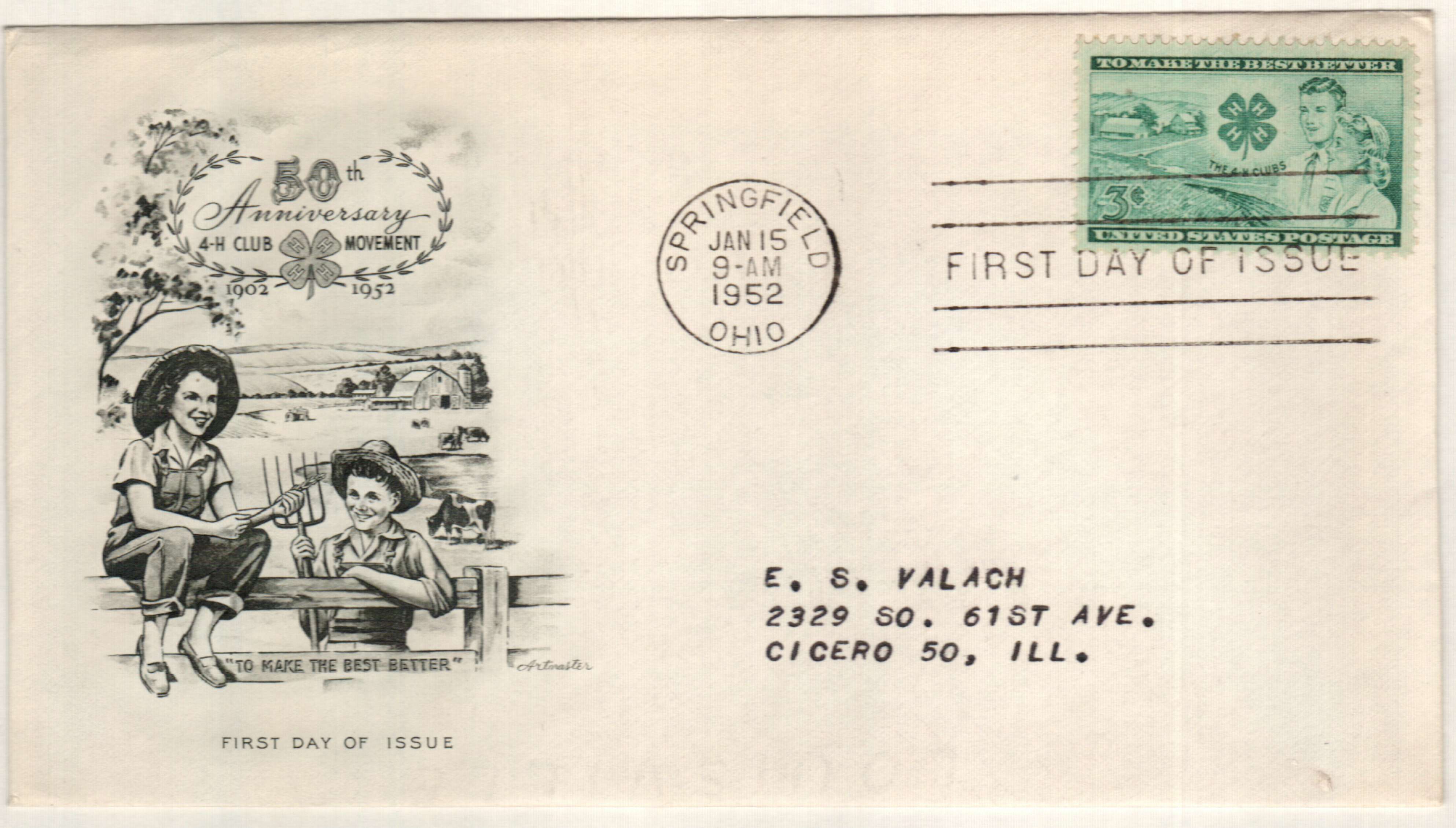
On January 15, 1902, A.B. Graham, superintendent of schools in Clark County, Ohio, created the Tomato Club or the Corn Growing Club. Graham’s club held regular meetings and had a planned program designed to teach youths through hands-on practical experience. The club’s members worked on projects dealing with vegetables, flowers, and soil testing. The Ohio State University Agricultural Experiment Station furnished the club with varieties of corn for the youths to grow.

Also important to the 4-H movement was Jessie Field Shambaugh. As a teacher in Page County, Iowa, Shambaugh created agricultural clubs and competitions to increase student interest in farming. By 1906, Shambaugh was superintendent of the 130 schools in Page County. She and her teachers formed the “Page County Progressives” and soon all Page County Schools had Boys Corn Clubs and Girls Home Clubs.
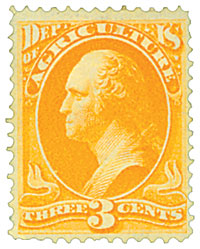
In 1908, the National Educational Bulletin declared Page County schools “The Best Rural Schools in America.” Superintendents quickly flocked to the area to learn more about this new approach. By 1910, similar programs were sprouting up across the country. Shambaugh’s work, along with similar work throughout the US, turned into the 4-H Club of America by 1914. The 4-H Club movement was sponsored by the US Department of Agriculture, to teach rural youngsters modern farming methods. Shambaugh also designed the clover emblem that symbolizes the organization to this day. The four H’s stand for head, heart, hands, and health.
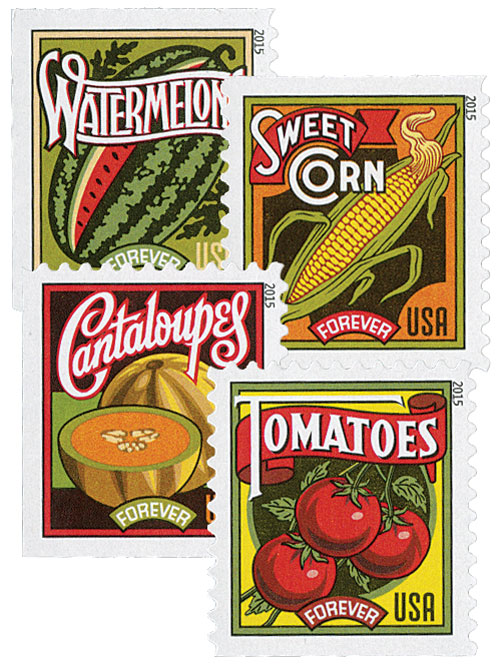
The nation’s first state 4-H camp was created in 1921 at Jackson’s Mill, West Virginia. This area had already become a popular picnic spot for local residents. The camp was placed under the care of the West Virginia University Extension Service. Jackson’s Mill was an early industrial center in West Virginia and the boyhood home of Confederate General Thomas J. “Stonewall” Jackson.
Today, 4-H is the largest informal educational program for young people in the US, with 6.5 million members between the ages 5 and 21. The organization’s slogan is “Learn by Doing,” and its members acquire skills through working on various projects and activities. The mission of 4-H is to engage “youth to reach their fullest potential while advancing the field of youth development.”
U.S. # 5004-07
2015 49¢ Summer Harvest
Before the supermarkets of the 1950s, fruits and vegetables were sold directly out of the wooden crates they were packed in. By the 1880s, refrigerated transport on coast-to-coast railroads meant those crates could travel farther than ever. Competition among growers escalated, inspiring the creative crate-labeling industry that flourished for 70 years.
To draw customers to a brand, producers needed enticing marketing. They used colorful, idealized images of fruit orchards and countryside farms to convey the natural and wholesome origins of their products being shipped nationwide. Firmly glued to the end of wooden crates, the vivid posters spoke for the product inside.
Over time, the design focus shifted. The landscapes of the late 19th century labels were replaced with more direct marketing slogans and images. A healthy child holds out a peach, suggesting the customer try it. A product’s health benefits might be boasted in a slogan or brand name. As time went on, less and less art and more product information appeared on the labels. And eventually, cardboard boxes made the crates and their labels obsolete.
Modern advertising occasionally revisits the old styles found on crate labels. And often, these original designs are reprinted in other forms – turning vintage marketing into contemporary art.
Vintage shipping crate labels, seed packets, and catalogs inspired the stamp art for the Summer Harvest stamps. Michael Doret designed and drew the stamps.
Value: 49¢ 1-ounce first-class letter rate
Issued: July 11, 2015 at the California State Fair, Cal Expo
First Day City: Sacramento, CA
Type of Stamp: DefinitiveӬ
Printed by: Ashton PotterӬ
Method: Offset printing in booklets of 20Ӭ
Perforation: Serpentine Die Cut 10 ¾ x 10 ¼
Self-Adhesive
Quantity Printed: 400,000,000 stamps
Founding Of The 4-H Club
In the late 1800s, it wasn’t uncommon for individuals and groups to create clubs for children to help them appreciate farming and nature. While it’s unclear who was the first to create such a group, 4-H Club recognizes A.B. Graham as one of the early founders.

On January 15, 1902, A.B. Graham, superintendent of schools in Clark County, Ohio, created the Tomato Club or the Corn Growing Club. Graham’s club held regular meetings and had a planned program designed to teach youths through hands-on practical experience. The club’s members worked on projects dealing with vegetables, flowers, and soil testing. The Ohio State University Agricultural Experiment Station furnished the club with varieties of corn for the youths to grow.

Also important to the 4-H movement was Jessie Field Shambaugh. As a teacher in Page County, Iowa, Shambaugh created agricultural clubs and competitions to increase student interest in farming. By 1906, Shambaugh was superintendent of the 130 schools in Page County. She and her teachers formed the “Page County Progressives” and soon all Page County Schools had Boys Corn Clubs and Girls Home Clubs.

In 1908, the National Educational Bulletin declared Page County schools “The Best Rural Schools in America.” Superintendents quickly flocked to the area to learn more about this new approach. By 1910, similar programs were sprouting up across the country. Shambaugh’s work, along with similar work throughout the US, turned into the 4-H Club of America by 1914. The 4-H Club movement was sponsored by the US Department of Agriculture, to teach rural youngsters modern farming methods. Shambaugh also designed the clover emblem that symbolizes the organization to this day. The four H’s stand for head, heart, hands, and health.

The nation’s first state 4-H camp was created in 1921 at Jackson’s Mill, West Virginia. This area had already become a popular picnic spot for local residents. The camp was placed under the care of the West Virginia University Extension Service. Jackson’s Mill was an early industrial center in West Virginia and the boyhood home of Confederate General Thomas J. “Stonewall” Jackson.
Today, 4-H is the largest informal educational program for young people in the US, with 6.5 million members between the ages 5 and 21. The organization’s slogan is “Learn by Doing,” and its members acquire skills through working on various projects and activities. The mission of 4-H is to engage “youth to reach their fullest potential while advancing the field of youth development.”








